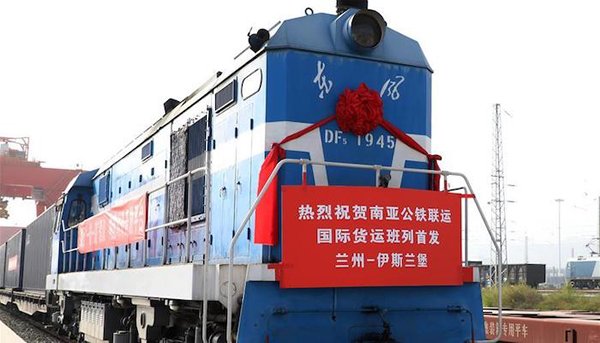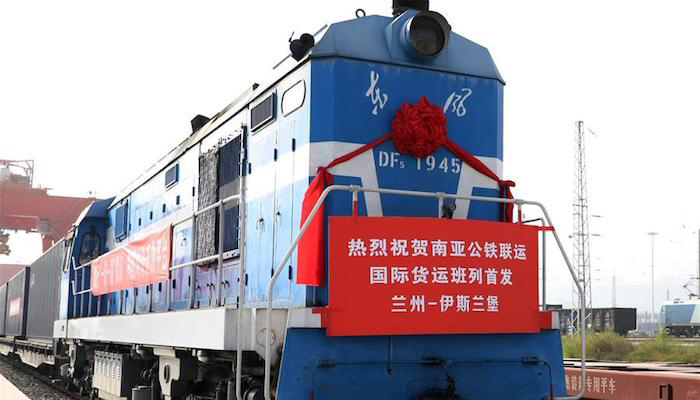BRI Restores Classic Silk Road China-Pakistan Link to Active Service
Gansu-Islamabad road and rail connection boosts local economy and facilitates rapid transit to upgraded port.

One of the key stretches of the classic Silk Road returned to the forefront of international trade in late October, when the new China-Pakistan road and rail freight link entered active service. Although the project's origins date back to 2005, well before the Belt and Road Initiative (BRI) – China's ambitious international infrastructure development and trade facilitation programme – was unveiled to the world, the link has latterly been co-opted into the wider scheme, with its success seen as a vital part of the mainland's overall economic masterplan.
As it stands, the new 4,500 km road and rail link sees regular train services connecting Lanzhou, the capital of China's north-western Gansu province, with the city of Kashgar, one of the key trade conduits in the Xinjiang Uygur autonomous region. From here, freight can travel onwards to Islamabad, the capital of Pakistan, via the largely restored Karakoram highway. Ultimately, the route will extend to the Port of Gwadar, the cornerstone of the China-Pakistan Economic Corridor (CPEC) and a major BRI project in its own right.
Until now, the transit time for China-origin goods destined for the Pakistani capital and the country's other affluent consumer hubs has been a minimum of four weeks, with sea links accounting for the bulk of such trade. The new land link cuts the travel time by more than 50%, with items expected to reach Pakistani retailers within 13 days of exiting mainland factories.
Inevitably, given this massive logistics upgrade, trade between China and Pakistan is expected to soar. The impact will be all the greater, however, once the planned extensions to the rail link are in place. Eventually, it is anticipated that freight-train services will run directly from Lanzhou to Gwadar, as well as to other ports serving the Arabian Sea. The next phase of the project, however, is still at the planning stage, with work on it not expected to be completed before 2030.
Its final implementation, however, will be truly transformational for the region. All trade between China and Pakistan currently has to pass along the Karakoram highway, a route rendered impassable by the extreme weather conditions prevailing in the country's December-March winter period. Even though this historic route, which wends its way across the Pamir Plateau and the Karakoram Mountains, has been substantially upgraded in the past 20 years, it still functions as something of a bottleneck, a problem that the extended rail link will play a key role in alleviating.
Among the previous upgrades to the existing highway was the US$510 million reconstruction of the 336 km stretch from the Pakistani city of Raikot to Khunjerab by the Chinese border, a move necessitated by cumulative flood damage over an extended period of years. Then, in 2015, construction work was completed on the two large bridges and five kilometres of tunnels that constitute a 24 km section of replacement roadway, which had originally been swept away by the 2010 landslide that led to the formation of the nearby Attabad Lake. With the cost, as with the Raikot-Khunjerab work, underwritten by China, the final bill was said to be in the region of $275 million.
At present, only one section of the highway still has an upgrade pending – the 136 km stretch linking Raikot to Thakot, a relatively small but geographically significant town on the banks of the Indus. Although a $64 million investment deal for the project was agreed with China last year, concern over local financial irregularities has put the backing temporarily on hold.
Even prior to the full implementation of the proposed rail link, the upgraded Karakoram highway is already driving local economic growth. As the primary land conduit between China and Pakistan, it has become an essential link in the supply line that is fuelling the massive BRI-backed infrastructure and power generation projects in the south of the country, many of which are at the heart of the wider $60-billion-plus CPEC initiative.
At the same time, the BRI-backed links have also delivered more tourists to the region, a development bolstered by the opening of the nearby Ruoqiang Loulan airport earlier this year. Close to the Khunjerab border crossing, the new air terminal has also proven to be a shot in the arm to many local towns, notably Tashkurgan, one of the most westerly settlements in China.
Geoff de Freitas, Special Correspondent, Islamabad





